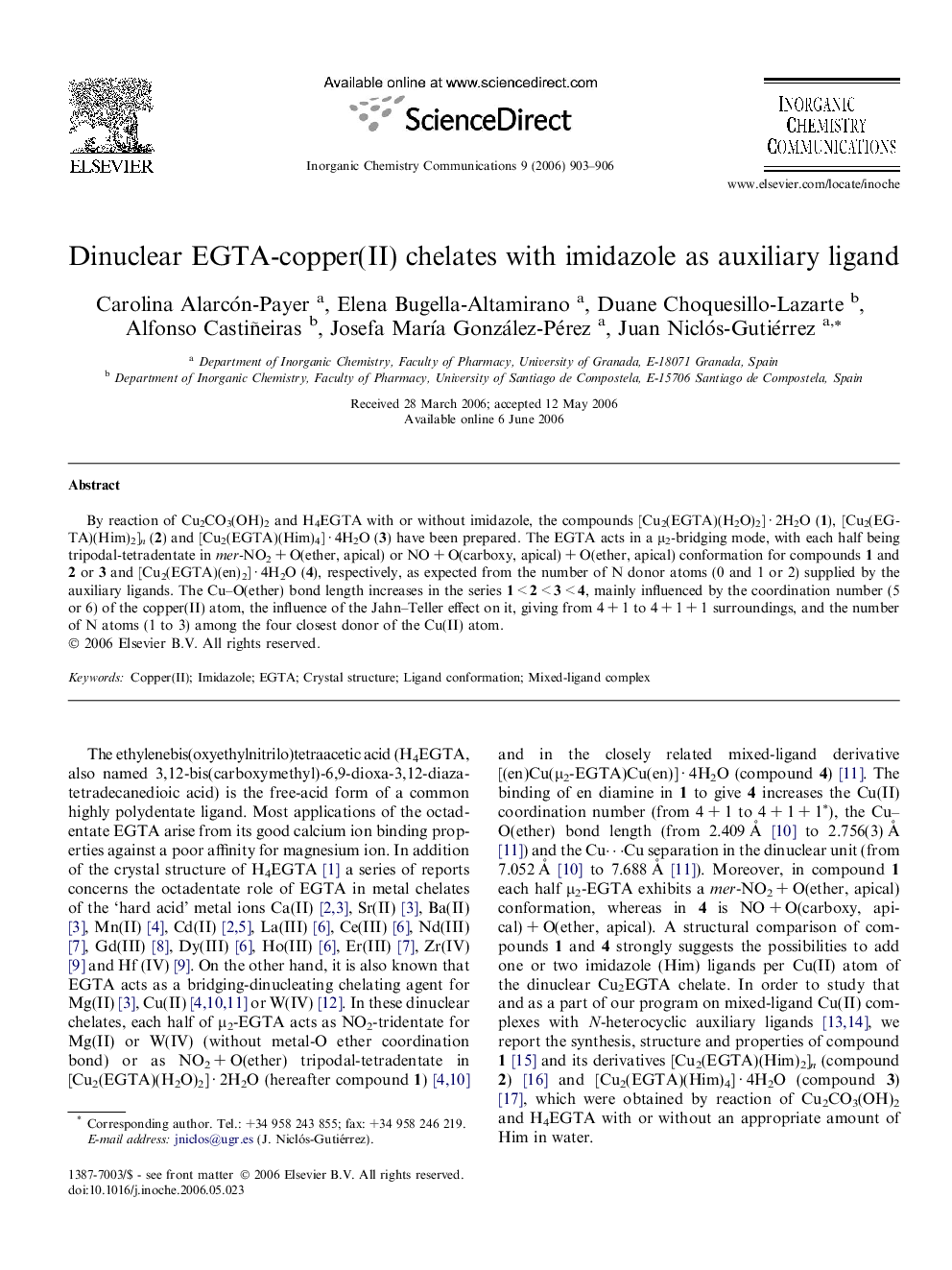| Article ID | Journal | Published Year | Pages | File Type |
|---|---|---|---|---|
| 1305096 | Inorganic Chemistry Communications | 2006 | 4 Pages |
By reaction of Cu2CO3(OH)2 and H4EGTA with or without imidazole, the compounds [Cu2(EGTA)(H2O)2] · 2H2O (1), [Cu2(EGTA)(Him)2]n (2) and [Cu2(EGTA)(Him)4] · 4H2O (3) have been prepared. The EGTA acts in a μ2-bridging mode, with each half being tripodal-tetradentate in mer-NO2 + O(ether, apical) or NO + O(carboxy, apical) + O(ether, apical) conformation for compounds 1 and 2 or 3 and [Cu2(EGTA)(en)2] · 4H2O (4), respectively, as expected from the number of N donor atoms (0 and 1 or 2) supplied by the auxiliary ligands. The Cu–O(ether) bond length increases in the series 1 < 2 < 3 < 4, mainly influenced by the coordination number (5 or 6) of the copper(II) atom, the influence of the Jahn–Teller effect on it, giving from 4 + 1 to 4 + 1 + 1 surroundings, and the number of N atoms (1 to 3) among the four closest donor of the Cu(II) atom.
Graphical abstractIn LCu(μ2-EGTA)CuL complexes (L = H2O, Him or en), the conformation of each half of EGTA and distance of the weak Cu–O(ether) bond can be related to the coordination number of the copper(II) atom, the influence of the Jahn–Teller effect and the number of N atoms among the four closest donors in the Cu(II) coordination polyhedronFigure optionsDownload full-size imageDownload as PowerPoint slide
